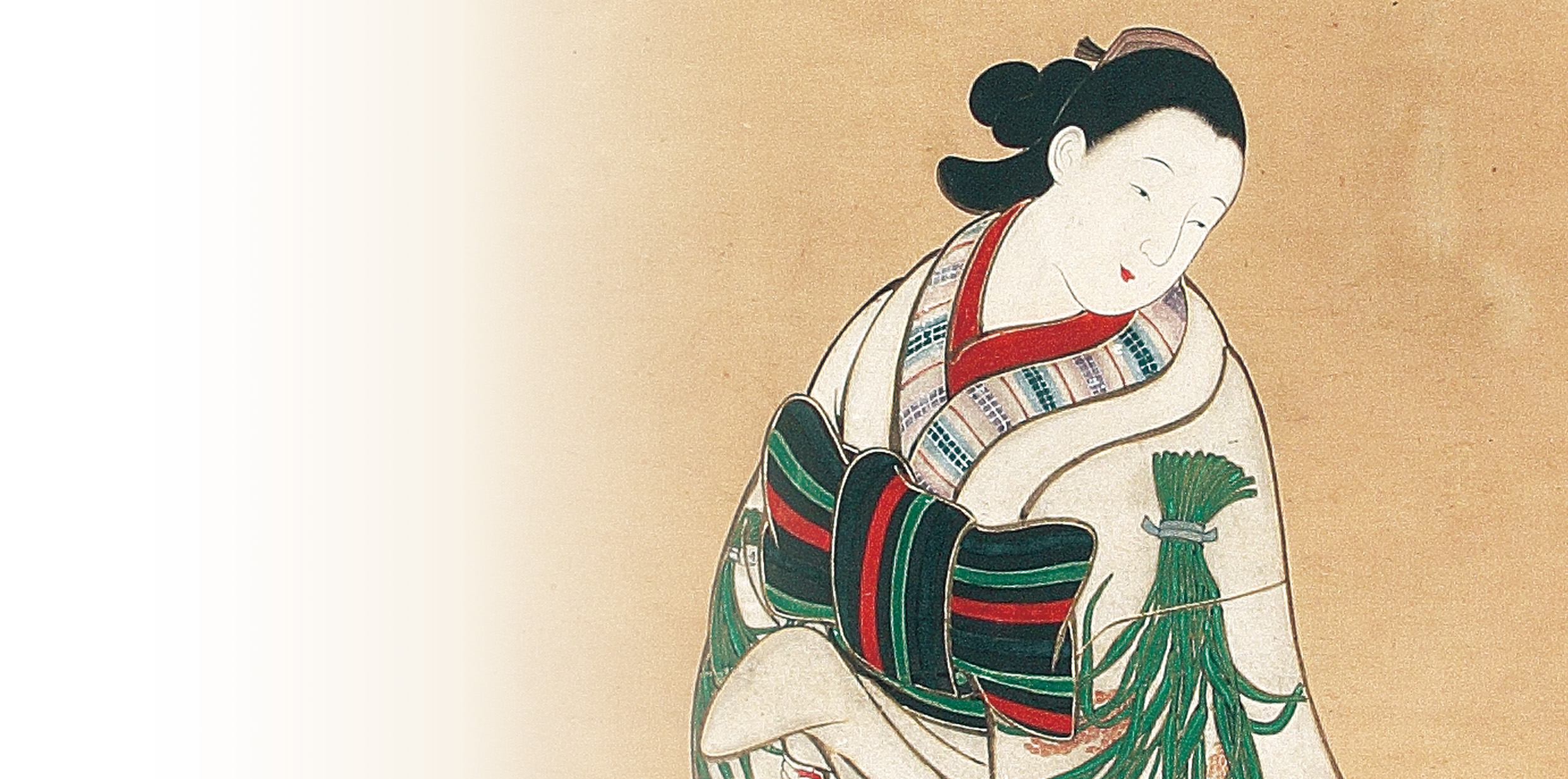Color on paper, introduced by the Inoue marquis family
130×51㎝ / 237×67㎝
vol.08 Unknown Artist, Beauty
I think that Japanese bijin-ga works are an unparalleled, pleasant, and unusual form of genre painting.
In particular, I am amazed by how bold Edo period works are. Now that Western style paintings are very common in Japan, when I look at this work, I am still surprised why I did not question, until now, not only the shadow, but also the background that is not depicted. As if floating in midair, the woman stands against a neutral background, but her clothes and hairstyle are drawn in intricate detail.
The same compositional style is seen in Hishikawa Moronobu’s famous “Beauty Looking Back” (Tokyo National Museum), and it seems that the bijin-ga of the Kanbun era (late 17th century) of the early Edo period is called “Kanbun Bijin” (Lit. Kanbun Beauties).
This work also seems to follow the style of Kanbun Bijin, where many of the women depicted have gentle faces with plump features, sharply postured and picking the hem of their kimonos with their right hand. As for their hairstyles, like this work, there are many works in this genre that present hairstyles that were seen from the early Edo period, i.e. “Kamometabo” in which the back of the hair was lengthened and tied like a seagull’s tail.
Another interesting point about this work is the woman’s fashionable kimono. Underneath the first layer of her kimono, which is boldly decorated with harvested and bundled rice symbolizing early autumn, is a kimono with horizontal stripes. Striped patterned fabric was imported to Japan far before the Edo period, but it is said that they only began to use it in clothing from the late Momoyama period to the early Edo period. Moreover, at first, when horizontal stripes became mainstream, it seems they were only worn by people such as courtesans (vertical stripes later became mainstream).
The green underskirt also provides vibrance, and the overall impression of her clothes is harmonized by the black obi (sash) that matches the same red and green lines of the kimono. The colors are coordinated into whites, reds, greens, and blacks, and I can see how she would be a fashionista of the early Edo period who was influenced by the splendor of the Azuchi-Momoyama period (1568-1600).
By focusing on a limited number of factors, such as a woman’s posture, fashion, and hairstyle, I believe the ideal woman of this time were rendered with enough space for the viewer’s imagination! Thinking now, people then may have imagined and projected their own ideas. I think it’s nice and romantic to view and appreciate beauty in new kinds of ways.
Mademoiselle Yulia
Mademoiselle Yulia rose to prominence as a DJ and singer in her teens. In recent years, she has grown widely active as a kimono stylist, model, columnist, awards judge, and has become the face of numerous global campaigns of widely known brands. Yulia graduated from Kyoto University of the Arts in 2020 and styled the visual campaign for the Victoria & Albert Museum’s exhibition, Kimono -Kyoto to Catwalk-.
https://yulia.tokyo/



